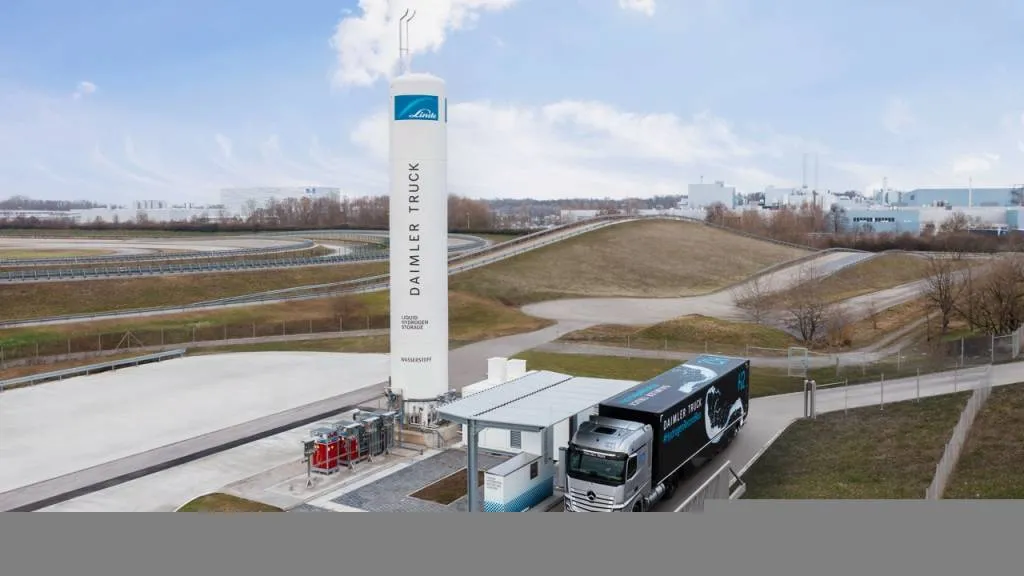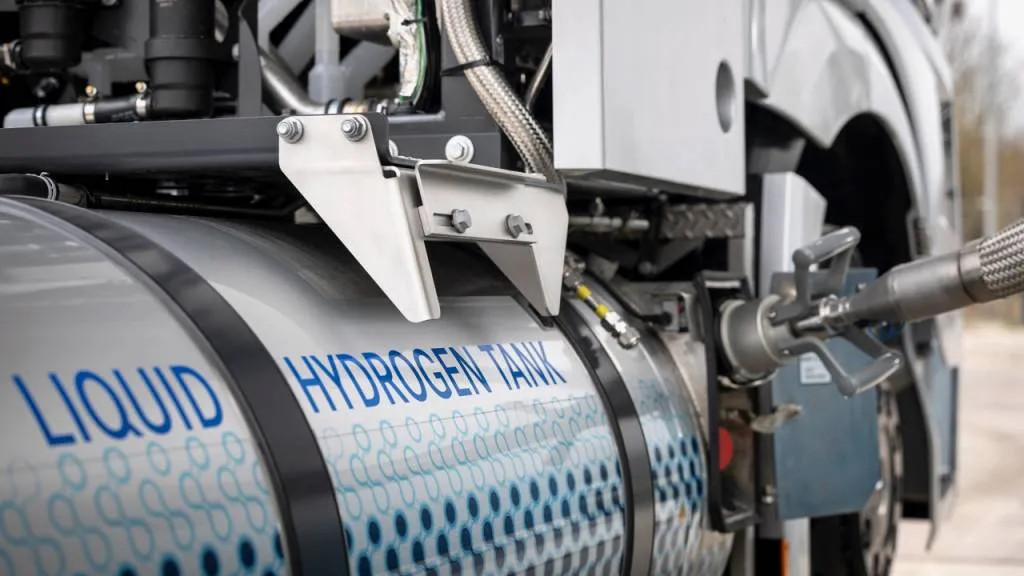Gaseous hydrogen is the default for fuel-cell vehicles, but Daimler Truck is experimenting with liquid hydrogen for large commercial vehicles—and it's a technology that has the potential to cross over to passenger vehicles, eventually.
The truck maker has partnered with Linde Engineering to set up a public liquid hydrogen station in Wörth am Rhein, Germany. Called sLH2, it will fuel Mercedes-Benz GenH2 trucks from five companies taking part in a customer trial starting later this year, according to a Daimler press release.
The station uses a new type of pump that raises the pressure of liquid hydrogen, turning it into supercooled liquid hydrogen, according to Daimler. This allows for higher storage density, a smaller footprint for the station, and lower energy consumption, the company claims.

Daimler sLH2 liquid hydrogen fueling station
Refueling speed is also claimed to be comparable to diesel trucks. Pumps can add 621 miles of range in 10 to 15 minutes, Daimler claims, while enough liquid hydrogen can be stored onsite for 10 hours of non-stop refueling, with additional capacity easily added by refilling the tanks.
The downside is that, to maintain a liquid rather than a gaseous state, hydrogen must be cooled to -423 degrees Fahrenheit. The installation also requires special materials. So the cost of implementing such a solution may be prohibitive.
This isn't the first we've heard of long-haul liquid-hydrogen semis from Daimler. The company has been discussing liquid hydrogen since showing a concept semi truck in 2020. That truck had the same GenH2 badging as the ones to be used in the upcoming customer trial, but with more futuristic styling.

Daimler sLH2 liquid hydrogen fueling station
Liquid hydrogen tech is also something that Airbus has been working on for jet engines—as an alternative to fuel cells and electric turboprops. Although storage issues remain complex there, too, some see it as a replacement for jet fuel.
Meanwhile Nikola is pushing ahead with its Hyla refueling network, which is designed around gaseous hydrogen, as part of a strategic plan to establish up to 60 hydrogen refueling solutions in the coming years.












